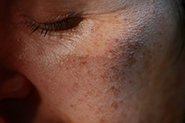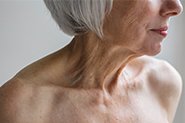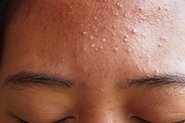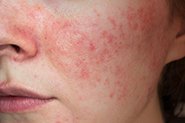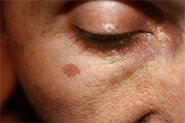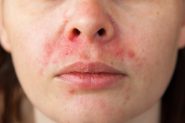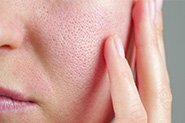SKINCARE TREATMENTS FOR ROSACEA. APPROVED BY DERMATOLOGISTS.
What is Rosacea?
Rosacea (Ro-Say-Sha) is a chronic inflammatory disorder of the facial skin. The most common symptom is redness across the centre of the face – nose, cheeks, chin and forehead. This redness is always present, and intensifies from time to time. Acne-like spots, rough skin, and visible blood vessels (called ‘telangiectasia’) can also make an appearance over time.
People with rosacea have a tendency to flush or blush, especially when nervous or anxious, drinking alcohol, eating spicy food or after exposure to the sun. Cold, dry weather can also make rosacea flare up. Dry, itchy and sensitive skin that reacts to skincare products is also common.
Up to 10% of Australians are diagnosed with rosacea, especially women aged over 30 with lighter skin tones, although it can develop at any age, and also occurs in those with deeper skin tones. It also runs in families. Rosacea in men can present as thickened, red and lumpy, bulbous skin, especially on the nose (called ‘rhinophyma’). This is more common in men aged over 50.
Living with rosacea is challenging. Suffering with sore, dry, red, bumpy and sensitive skin can make you feel anxious, embarrassed and depressed, and your self-confidence can take a hit. You can also find face-to-face work and social interactions more difficult.
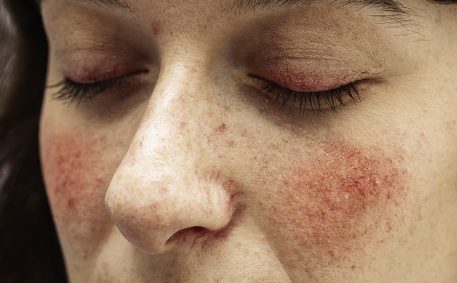
What Causes Rosacea?
The cause of rosacea isn’t completely understood, but there is growing evidence that it is linked with systemic inflammation and dysfunction of our immune and vascular systems.
Sun exposure is thought to play a part in rosacea flares, and overall progression of the disorder. UV radiation increases free radicals in the skin that stimulate the immune system as well as the release of chemicals that cause dilation of blood vessels.
In some cases, a common skin mite called Demodex folliculorum may be involved. Even though this mite normally hangs out on skin, in those with rosacea the numbers of Demodex are increased.
How are rosacea and acne different?
Rosacea used to be called ‘acne rosacea’ because the breakouts look similar to acne lesions (acne is technically known as ‘acne vulgaris’). But they are not the same – and not even related!
To the untrained eye, rosacea can sometimes look like acne, and it’s also possible to have both rosacea AND acne vulgaris at the same time. Which is why a proper medical diagnosis is vital to getting the right treatment, and why we have a video consult, not just a questionnaire and photographs, as a standard part of our service.
WHAT’S THE BEST PRESCRIPTION ROSACEA TREATMENT?
Unfortunately there is no cure for rosacea, but it can be well managed with topical treatments to reduce inflammation, redness and bumpy skin. These are very effective when combined with skincare, lifestyle changes (such as dietary changes to improve gut health – read more HERE), and in-clinic laser, IPL or light treatments for redness and broken vessels (sadly, no topical skin creams can fix broken vessels). They key to the best rosacea treatment is tailoring a treatment plan to every individual patient, because the causes are so varied.
That’s where Qr8 MediSkin comes in! Our doctors can customise the best rosacea treatment product for you. Without the need to visit a dermatologist, or wait in line at the pharmacy. Our doctors can also refer you to the best laser dermatologists and opthalmologists who specialise in rosacea treatment.
But we don’t just give you access to the best customised skin treatments. We are Australia’s go-to service for support so you can use your rosacea treatment safely and effectively, and get skincare advice to help you manage rosacea.
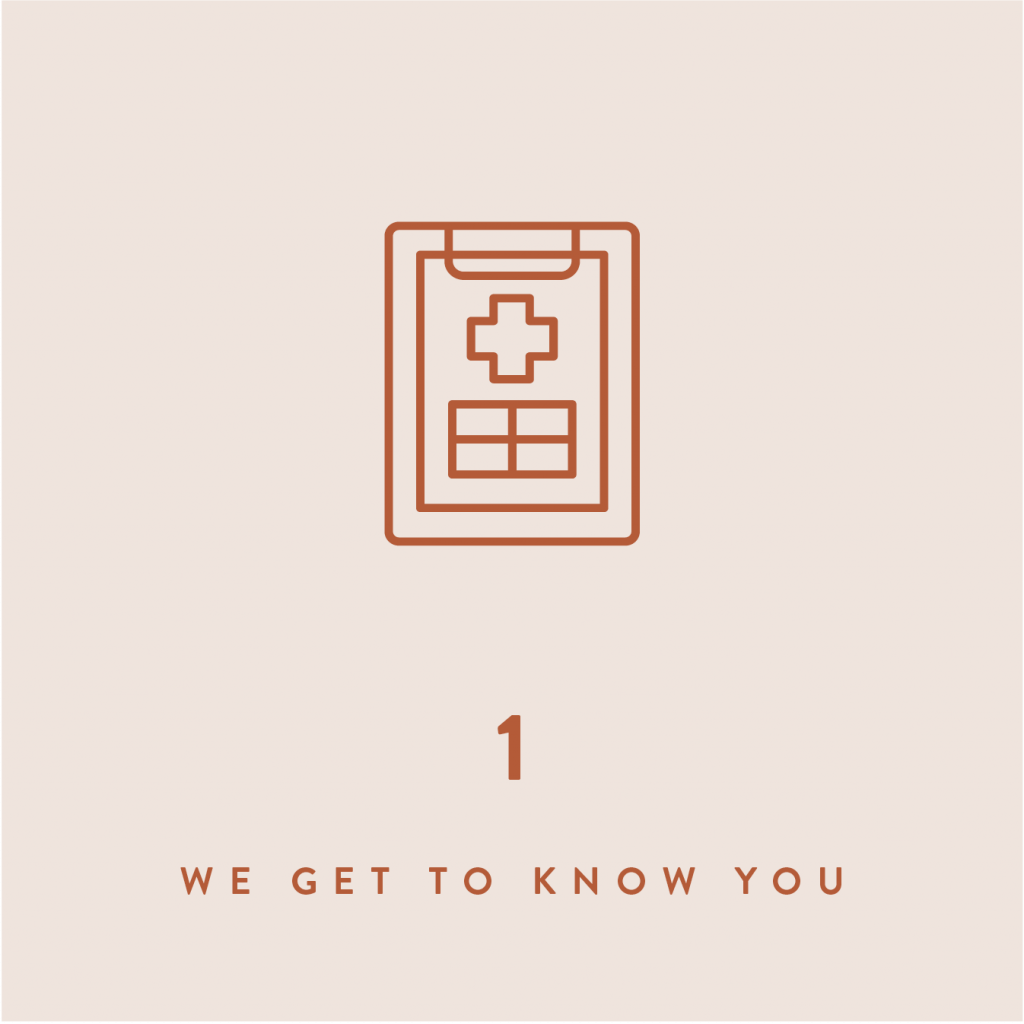
We get to know you – our doctors can invest time during your 1:1 video consult helping you get the most from your rosacea treatment. Like asking about rosacea triggers, and explaining which of the multiple rosacea treatment options are right for you.
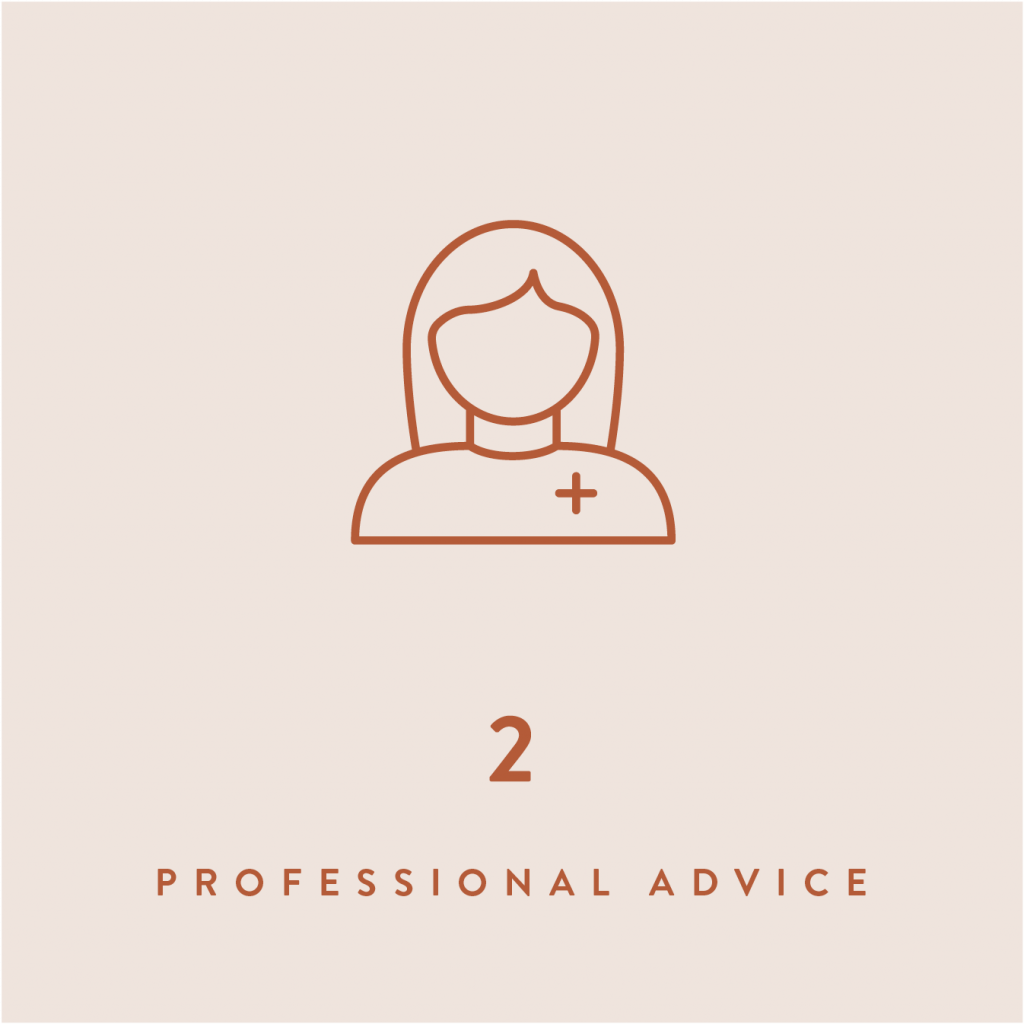
Our Skincare Support Team provides 1:1 personalised skincare advice and support to all our patients. We help you choose rosacea-friendly skincare and provide specialist guides on choosing the right sunscreen, and using it correctly to help minimise rosacea flare ups. This is included in the one-off, all-inclusive cost of your treatment.
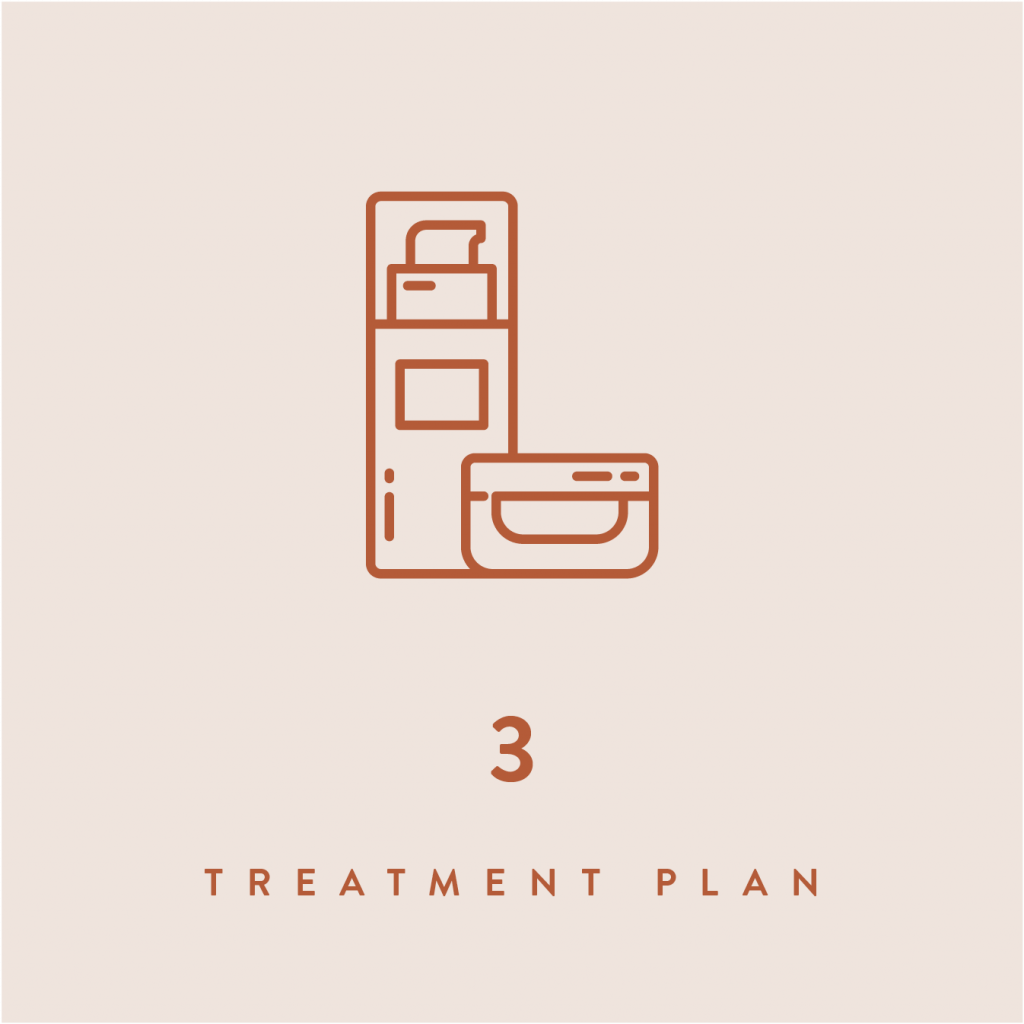
We design the best rosacea treatment for you – Our doctors use clinical guidelines developed by our in-house medical and scientific team, based on the most current and best-available evidence. They use these to design the best rosacea treatment for you – a skin treatment cream for rosacea with a fully customised blend of active ingredients that can be adjusted to suit your skin’s tolerance, allergies and sensitivity level, available only on prescription.
Your customised prescription rosacea treatment medication includes a blend of ingredients designed just for you:
Azelaic acid – at prescription-strength concentrations to minimise spots, soothe inflammation, kill bacteria and unclog pores that lead to the acne-type bumps
Niacinamide – to reduce inflammation and improve skin barrier function
Sometimes, our doctors will recommend a course of oral antibiotics in combination with a topical treatment. Our doctors choose antibiotics known to result in the lowest rate of antibiotic resistance, and they will only be used if absolutely necessary.
Can I use prescription retinoids if I have rosacea?
Once your rosacea is well-controlled, it is possible to include active skincare ingredients like retinoids in your routine. Our doctors can prescribe low strength retinoids that can be tolerated by those with sensitive skin. And our Skincare Support Team works with you to ensure you experience minimal side effects.
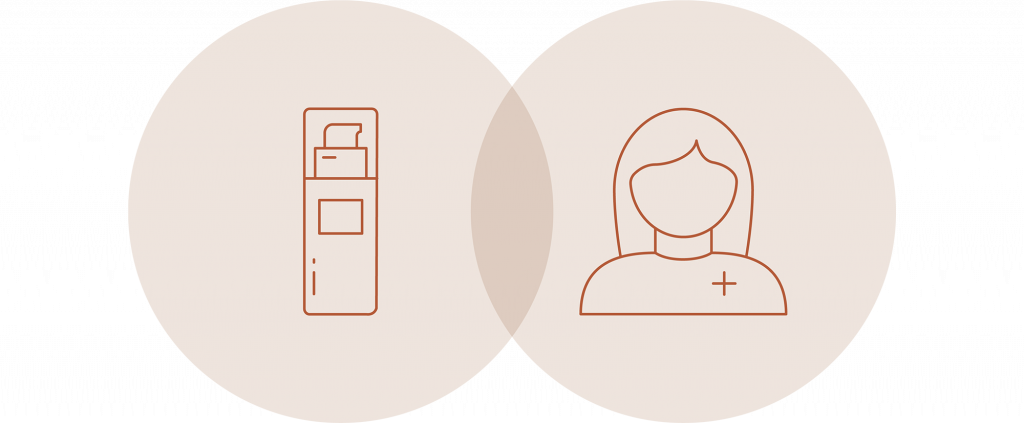
WHY CAN’T I JUST BUY AN OVER-THE-COUNTER AZELAIC ACID PRODUCT FOR ROSACEA?
Our rosacea products use concentrations of azelaic acid (15-20%) that scientific studies show reduce the symptoms of rosacea. Over the counter or cosmetic azelaic acid products are often only available at lower percentages (10% or sometimes even 5% – make sure you check your existing treatment product!). There is ZERO evidence that these do anything to treat rosacea.
We also combine our azelaic acid with evidence-based ingredients like niacinamide and glycerin into a single cream (so you don’t have to purchase them separately!). These have been shown in scientific studies to soothe and calm dry, red, burning, stinging skin associated with the impaired skin barrier that comes with rosacea.
Because skincare and lifestyle changes are equally as important as treatment when it comes to rosacea, 1:1 personalized support from our experienced Skincare Support Team is included (with your rosacea treatment product, medical appointment, and delivery) in the one-off, all-inclusive cost of your treatment. We help you choose skincare products with evidence-backed ingredients to calm skin. We can also help you identify and manage your personal rosacea triggers.
The Best Skincare Products for Rosacea
Choosing skincare products is particularly challenging for rosacea sufferers. Because rosacea negatively impacts the skin barrier, it can cause dry, itchy, sensitive skin that burns and stings when using cosmetic skincare products, particularly those that are fragranced and contain active ingredients like exfoliants and vitamin C.
Overloading skin with products, using grainy exfoliants, or cleansing tools (even just overzealous rubbing with a soft face washer!) can cause rosacea flares or encourage redness to persist in the skin.
And finding a sunscreen that doesn’t sting is vital – sunlight plays a huge part in triggering rosacea, and making it worse.
HERE’S SOME SIMPLE DO’S AND DON’TS TO HELP MANAGE ROSACEA (AND CHOOSE THE BEST SKINCARE FOR ROSACEA)
| Do | Don't | ||
|---|---|---|---|
| Keep your skincare routine simple | Use complicated, multi-step skincare routines, loaded with serums and actives | ||
| Choose gentle, fragrance-free products | Choose heavily-fragranced products with long ingredient lists | ||
| Use fingers only to cleanse skin | Use cleansing brushes, devices or cloths | ||
| Keep cleansing to a minimum | Double-cleanse | ||
| Use lukewarm water to rinse skin | Use hot water on the face or take hot baths/showers | ||
| Focus on moisturising to keep the skin barrier healthy | Think exfoliants are the answer to dry skin (it’s like using steel wool to repair damage!) | ||
| Use sunscreen and sun protection like sunglasses, hats and clothing religiously | Expose skin to UV radiation from the sun on a daily basis |
All our patients receive personalized 1:1 advice from our Skincare Support Team about inexpensive skincare products to support their rosacea treatment product. It’s part of our all-inclusive cost – read more in our FAQ.
Do I need to spend a lot of money on skincare to support my rosacea treatment product?
Click HERE to read what our founder, Dr Michele Squire, told Mamamia Australia about expensive skincare (hint: expensive skincare often contains long lists of ingredients at tiny concentrations just to justify their high price. The best moisturiser for rosacea is often the least expensive!)
References


